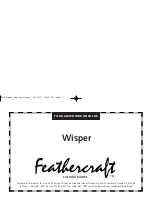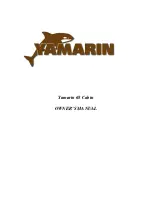
CS36T Owner’s Manual
Page 17
7
ELECTRICAL
The yacht is wired for both 12V and 110V systems.
Wiring harnesses and connections, including the main switch panel, are installed as high in the interior
of the yacht as possible, reducing the exposure to water. See wiring diagram of your commissioning set.
See also Diagrams No. 26 (white print), No. 14 and No. 15 of the mast lighting system and VHF hook-up.
7.1
Batteries
The battery box is located near the engine under the chart table bench (quarter berth). The explosion-
proof 4-position main battery switch is located at the starboard side of the companionway (OFF, ONE,
BOTH, TWO).
The switch activates the #1 and #2 battery or both batteries will operate in parallel.
Do not turn this switch to "OFF" while the engine is running, since serious damage to the charging
system could result.
Most engine manufacturers do not recommend that batteries be changed with this switch while the
engine is running. But CS Yachts installs a splitter and therefore it is safe to switch to the alternate
battery while the engine is running.
The professional mariner battery charger is fully automatic and so when connected to a dockside AC
supply, it is quite safe to have the AC/DC converter switch on and the yacht left unattended. Charging
current is routed to the batteries through a splitter. This device acts as a one-way gate, allowing the
alternator to charge both banks of batteries, but preventing any reverse current flow between batteries.
Note that the alternator will charge both banks of batteries irrespective of the position of the battery
master switch. In other words, you can charge the batteries with AC power even with the master switch
in the "OFF" position.
7.2
Alternators
The Westerbeke engine is equipped with a standard alternator as described in the engine manual
7.3
Electronics
Most yacht owners add various electronic equipment such as depth sounders, logs, speedometers, all of
which require through hull fittings.
Equipment such as VHF, SSB, R.D.F., wind indicators, relative wind indicators and Loran radar usually
require masthead fittings. Most problems with the instruments are caused by faulty installation and
should be done in most instances by a specialist.
















































